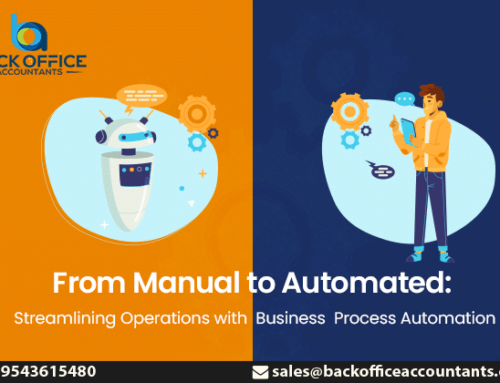Cash Conversion Cycle (CCC) also called as Cash Cycle or Net Operating Cycle is the metric that represents the time taken for the company to convert its cash into inventory and then into cash through sales.
It quantifies the time duration for which the funds are tied up in the production and sales process before they are converted into cash inflow to reach your bank accounts. The Cash Conversion Cycle represents how swiftly and efficiently cash moves through the company.
A long Cash Conversion Cycle (CCC) is assigned of the inefficient process that can potentially cause cash flow problems impacting the financial health of the business. If you are a business that is marred by a long Cash Conversion Cycle and are looking for the measure to shorten the cycle then this blog is for you. With the inputs of our experts at Back Office Accountants, we offer 6 tips that can help you shorten your Cash Conversion Cycle today. Read on:
6 Tips to Reduce and Cash Conversion Cycle & Improve Liquidity for your Business:
1. Optimize Inventory: Inventory management happened to be the key factor in the increasing gap between short and long cash conversion cycles in majority of the cases evaluated by Back Office Accountants. So the first step towards shortening the cash conversion cycle starts with optimizing inventory in line with the existing demand.
Business can improve their inventory management by diligently planning their inventory as per the requirements. To calculate the right inventory to be had in hand one can leverage the data available from sales trends, Accounts Receivable, and other inventory KPIs in the database. Consider JIT (Just-in-time) inventory management where supplies are delivered as promptly as they are needed instead of waiting for weeks and months. One can further improve the cycle and improve cash by offering discounts on slow-moving inventory items.
2. Extending Credit is a No-go: Credit extensions drastically impact the cash conversion cycle, even harder when they are on the whims. If important, businesses are requested to set clear terms for the credit extensions during the vendor selection. In the case the credit extension is the norm in your industry always remember to club it with late payment surcharge and early payment discount policies to discourage the payment delays and compensate for them if they happen.
3. Improve Order-to-Cash Cycle: Evaluate the current cash–to–order process and identify the unnecessary steps or redundancies that may be causing the payment delays. Quantifying the metrics for the order-to-cash cycle is the first step you can take to can help understand the current cycle. Calculate the total number of days taken to get back the investment in products and services, if it is more than 30 days, you need to take a hard look and bring in improvement to reduce the cycle time. Digital invoicing, automation, easy payment options are some of the key elements that can help in this regard.
4. Re-evaluate Customer Credit Criteria: One can further reduce the payment hiccups by diligently setting up the right customer credit process in applicable industries. Dive into their customer background to identify the healthy and stable businesses that are more likely to pay on time. Make revisions to the customer credit criteria – payment terms, processes, and credit changes to facilitate faster payment with a better cushion while maintaining good customer relations.
5. Offer East Payment Options to Customers: Offering easy and versatile payment options clubbed with 1 to 2 % discount offers for payments within 20 to 30 days can help businesses shorten the current gap in the Cash Conversion Cycle. Offering early payment discounts not only discourages late payments but also goes a long way in improving the relationship.
6. Adjust Your Accounts Payable: Adjusting the lengths of Accounts Payable and increasing the Days Payable Outstanding can go a long way in shortening the Cash Conversion Cycle. Though it is advised to pay the invoices according to set terms, one can further try to extend the terms and choose to pay just before the invoice date to give a free hand and improve the cash in hand. Adjusting Accounts Payable gives flexibility and lets you more time to collect payments and shortens the cash conversion cycle.
So businesses are advised to closely work with their Accounts Payable department to streamline their process to control the AP and AID the Cash Conversion Cycle. However, most businesses face AP problems and fail to gather sufficient help in optimizing their working capital due to the lax AP process and this is where Back Office Accountants can help.
How Back Office Accountants can help?
Optimizing working capital by shortening the cash conversion cycle is a goal that requires streamlines and efficient Accounts Payable and Accounts Receivable supported by other accounting functions. It is difficult for an accounting department to ace each of these accounting processes and ensure the goal is met on time in a limited budget. However, remote accounting firms like Back Office Accountants are here to make this possible.
As one of the leading remote accounting firms that have been providing high-ROI remote accounting services for years now. We specialize in Accounts Payable Services Accounts Relievable Services and also provide Full-service Back Office Accounting Services which can readily fill the gaps and level-up your current accounting process to help you reach your working capital goals. If you are looking for accounting help to shorten your cash conversion cycle and improve your working capital, you can contact us here: https://www.backofficeaccountants.com/







